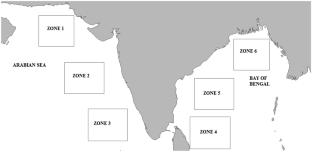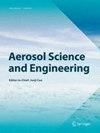Recent Decadal Aerosol Trends over Oceanic Regions Surrounding Indian Landmass
Abstract
Knowledge of aerosol distribution and trends in the total atmospheric column as well as at different vertical levels of the atmosphere can provide crucial inputs to understand the role of aerosols in the changing climatic scenario. Indian region is one of the major aerosol hotspots and it is therefore important to have a continuous monitoring of varying aerosol trends over both land and surrounding water bodies. Several studies have been already carried out to investigate the aerosol changes over Indian mainland. This study provides insight into the columnar and vertical distribution as well as trends of aerosols over six oceanic zones surrounding the Indian region over the Arabian Sea (AS) and the Bay of Bengal (BoB) waters during winters and post-monsoons (2010–2019). The work has been carried out using the Level 2 aerosol datasets from space-borne Cloud-Aerosol Lidar with Orthogonal Polarisation (CALIOP) onboard Cloud-Aerosol Lidar and Infrared Pathfinder Satellite Observations (CALIPSO) mission, Dark Target algorithm data products from Moderate Resolution Imaging Spectroradiometer (MODIS)/Aqua sensor as well as the model reanalysis products from Modern-Era Retrospective Analysis for Research and Application–2 (MERRA-2) Reanalysis. The Hybrid Single-Particle Lagrangian Integrated Trajectory (HYSPLIT) back trajectory frequency cluster analysis has also been carried out to explore the possible sources of aerosols. The variability of planetary boundary layer height from European Centre for Medium-range Weather Forecasts Re-Analysis–5 (ECMWF ERA 5) Reanalysis products in connection with changes in aerosol distribution has also been discussed.


 求助内容:
求助内容: 应助结果提醒方式:
应助结果提醒方式:


